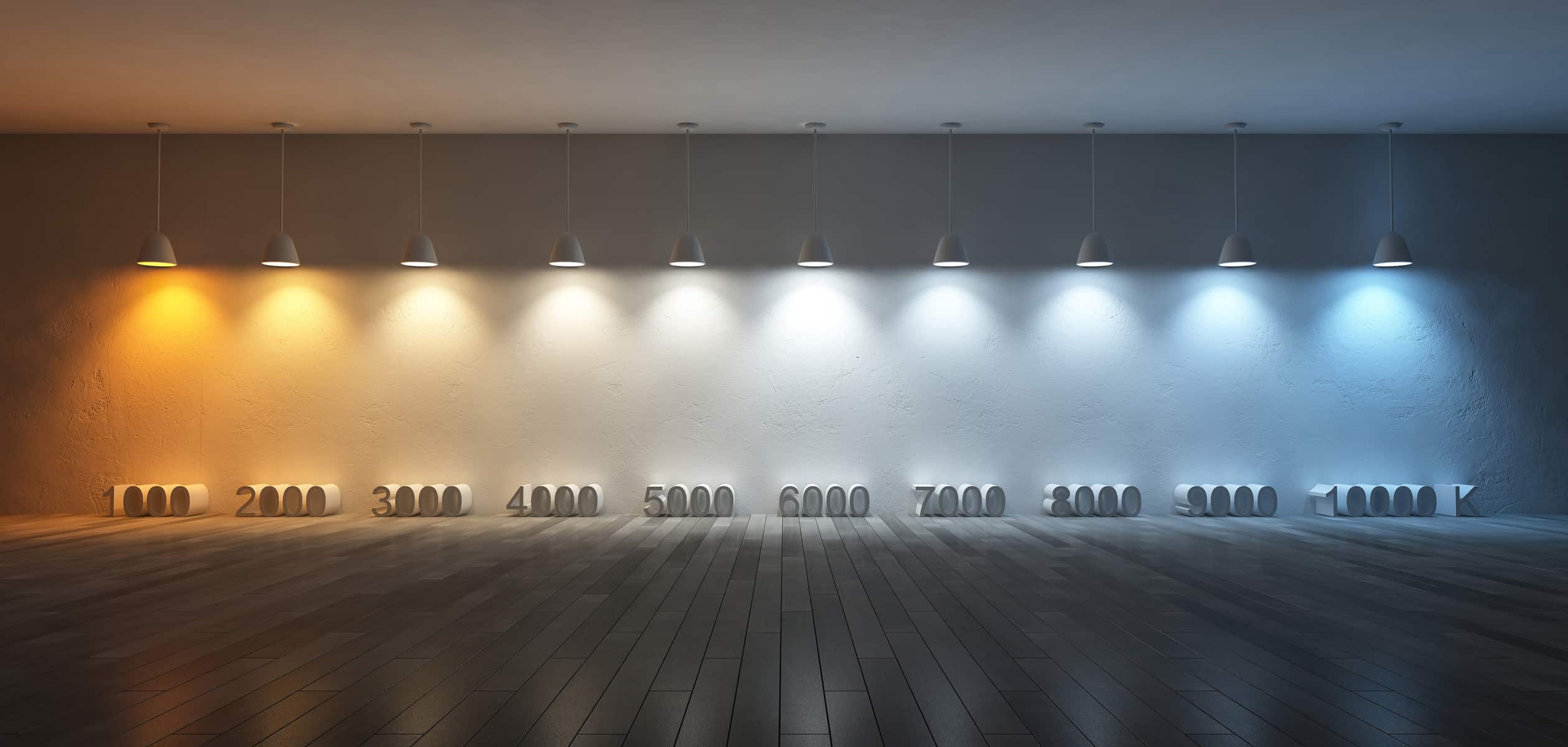In the world of commercial lighting, color temperature is a critical factor that often goes overlooked. However, its impact on the overall ambiance, productivity, and functionality of a commercial space cannot be underestimated. In this comprehensive guide, we’ll delve into the concept of color temperature in commercial lighting, exploring what it is, how it is measured, and its practical applications. By the end of this article, you’ll have a deeper understanding of color temperature and how to make wise choices when it comes to selecting the right lighting for your commercial space.
What Is Color Temperature?
The appearance of light coming from a light source, like a bulb or fixture, is referred to as color temperature. It expresses the hue of light emitted by the source and is measured in Kelvins (K). Comprehending color temperature is essential due to its significant impact on the ambiance and efficiency of an area.
Color temperature is often described in terms of warm, neutral, and cool light. Warm light has a lower color temperature, typically in the range of 2000K to 3000K, and it appears more yellow or orange. On the other hand, cool light has a higher color temperature, typically in the range of 4000K to 6500K, and it appears bluish-white. Neutral light falls somewhere in between, usually around 3500K to 4000K.
Measuring Color Temperature
The measurement of color temperature is based on the color of light emitted by a theoretical black-body radiator at a particular temperature. As the temperature of this radiator increases, the color of the light it emits changes.
At lower temperatures, such as 2000K, the light appears warm and yellowish. As the temperature rises to around 3000K, the light becomes more neutral or warm-white. Moving further up the scale, as the temperature reaches 4000K and beyond, the light appears cooler, with a bluish-white tone.
In practical terms, manufacturers use this scale to label their lighting products. When you see a label that says a bulb or fixture has a color temperature of 2700K, for example, it means the light it emits will have a warm, yellowish appearance.
Applications Of Color Temperature In Commercial Lighting
Now that we know the basics of color temperature, let’s explore its applications in commercial lighting and why it’s essential to choose the right color temperature for your space:
1. Mood And Atmosphere
The color temperature of lighting holds a significant role in setting the atmosphere of a commercial space. For example, restaurants and hotels often opt for warm lighting (around 2700K) to create a cozy and inviting ambiance. In contrast, offices and retail stores may choose neutral or cool lighting (around 3500K to 4000K) to promote alertness and productivity.
2. Task Lighting
Different tasks require different types of lighting. In an office environment, where tasks such as reading documents or working on a computer are common, neutral or cool lighting is preferred because it enhances visibility and reduces eye strain. On the other hand, in a spa or relaxation area, warm lighting creates a soothing environment.
3. Product Display
Retail stores rely heavily on effective product display, and the right color temperature can make a significant difference. Cool white lighting can make products appear fresh and vibrant, while warm lighting can give a sense of luxury and comfort. The choice of color temperature should align with the brand and the type of products being sold.
4. Health And Wellbeing
In healthcare facilities lighting color temperature can impact patients’ comfort and well-being. Neutral lighting is often preferred in clinical settings to provide accurate color rendering for medical examinations. However, in inpatient rooms or waiting areas, warmer lighting can create a more comforting and calming environment.
5. Outdoor Lighting
Color temperature considerations extend to outdoor commercial spaces as well. For example, outdoor parking lot lighting with a cooler color temperature can enhance visibility and security during the night, while outdoor dining areas may benefit from warmer lighting to create a welcoming atmosphere.
Color Temperature And Color Rendering Index (CRI)
When discussing color temperature, it’s essential to mention the Color Rendering Index (CRI). CRI determines how accurately a light source reproduces colors compared to natural sunlight. It is based on a scale from 0 to 100, with a higher number indicating better color rendering.
Different light sources can have the same color temperature but different CRIs, leading to variations in how colors appear under that light. For commercial spaces where color accuracy is important, such as art galleries or retail stores, it’s crucial to consider both color temperature and CRI when selecting lighting.
Making Informed Choices
Choosing the right color temperature for your commercial space involves considering various factors, including the type of space, its function, and the desired atmosphere. Here are some practical tips to help you make informed decisions:
- Identify The Purpose Of The Space: Determine the primary function of the space. Is it an office, a retail store, a restaurant, a healthcare facility, or something else? Each type of space has unique lighting requirements.
- Consider The Time Of Day: Think about when the space will be used most frequently. For spaces that operate primarily during the day, natural daylight may influence the choice of lighting color temperature. Spaces open in the evening or at night may require different considerations.
- Blend Warm And Cool Lighting: In some cases, a combination of cool and warm lighting can create an appealing and balanced atmosphere. For instance, in a restaurant, warm lighting at dining tables can contrast with cooler lighting in the bar area.
- Test Samples: Before committing to a specific color temperature, obtain samples of lighting products and test them in the actual space. This allows you to see how the lighting will interact with the environment and make adjustments if needed.
- Consult With Lighting Experts: If you’re unsure about the best color temperature for your commercial space, consider consulting with lighting designers or experts who can provide recommendations based on your specific needs.
Conclusion
Color temperature has a major impact on a commercial space’s aesthetics, functionality, mood, and overall feel. You can make better decisions about lighting by understanding color temperature. The right color temperature can help you achieve your lighting goals. Whether it is to enhance the appearance of retail products, create a cozy atmosphere in a restaurant, or boost productivity in the office, the choice of the correct color temperature will be crucial. Don’t forget that lighting can transform a room, not just by illuminating it but also by making it more comfortable, productive, and inviting for anyone who enters.







